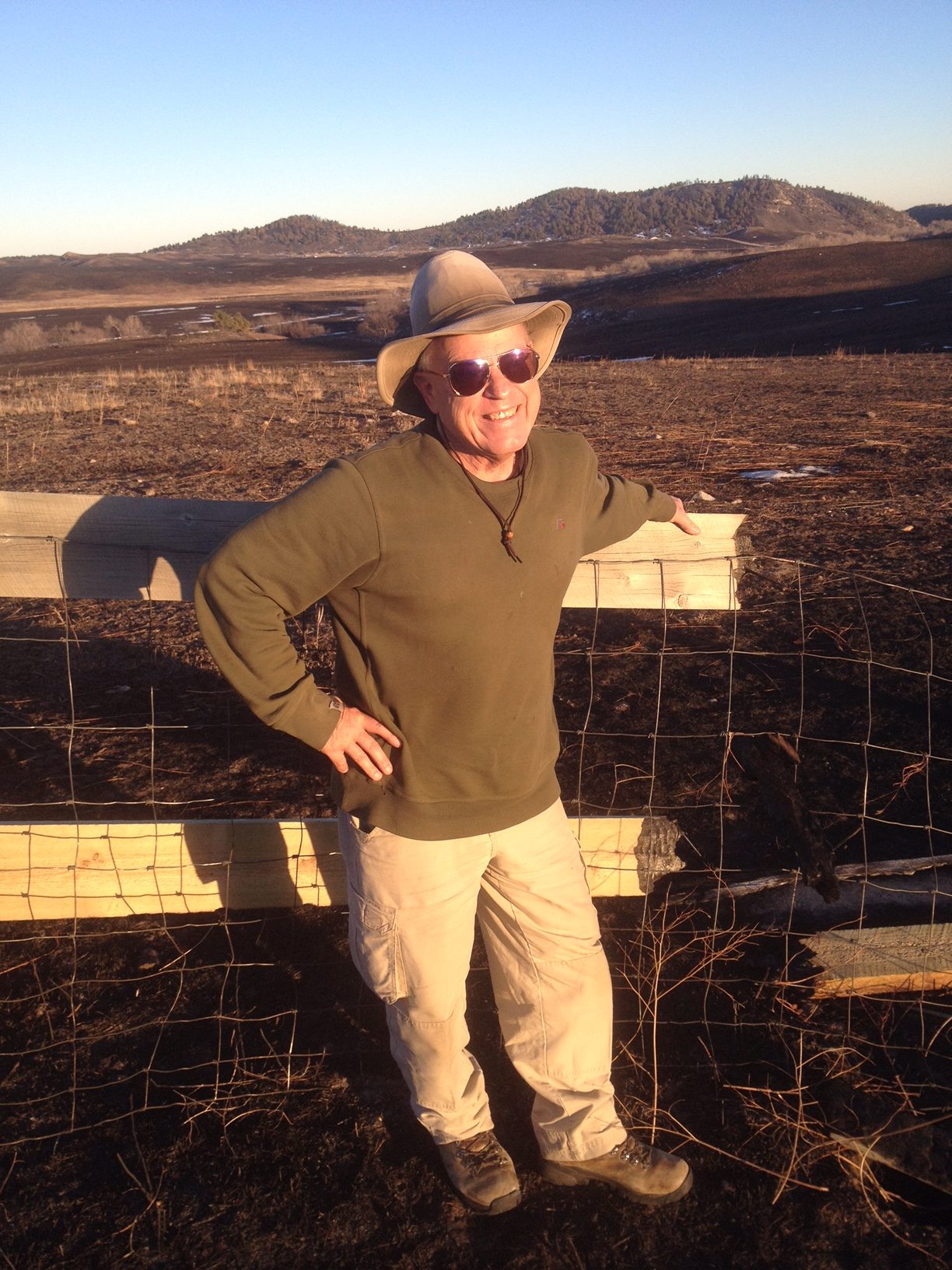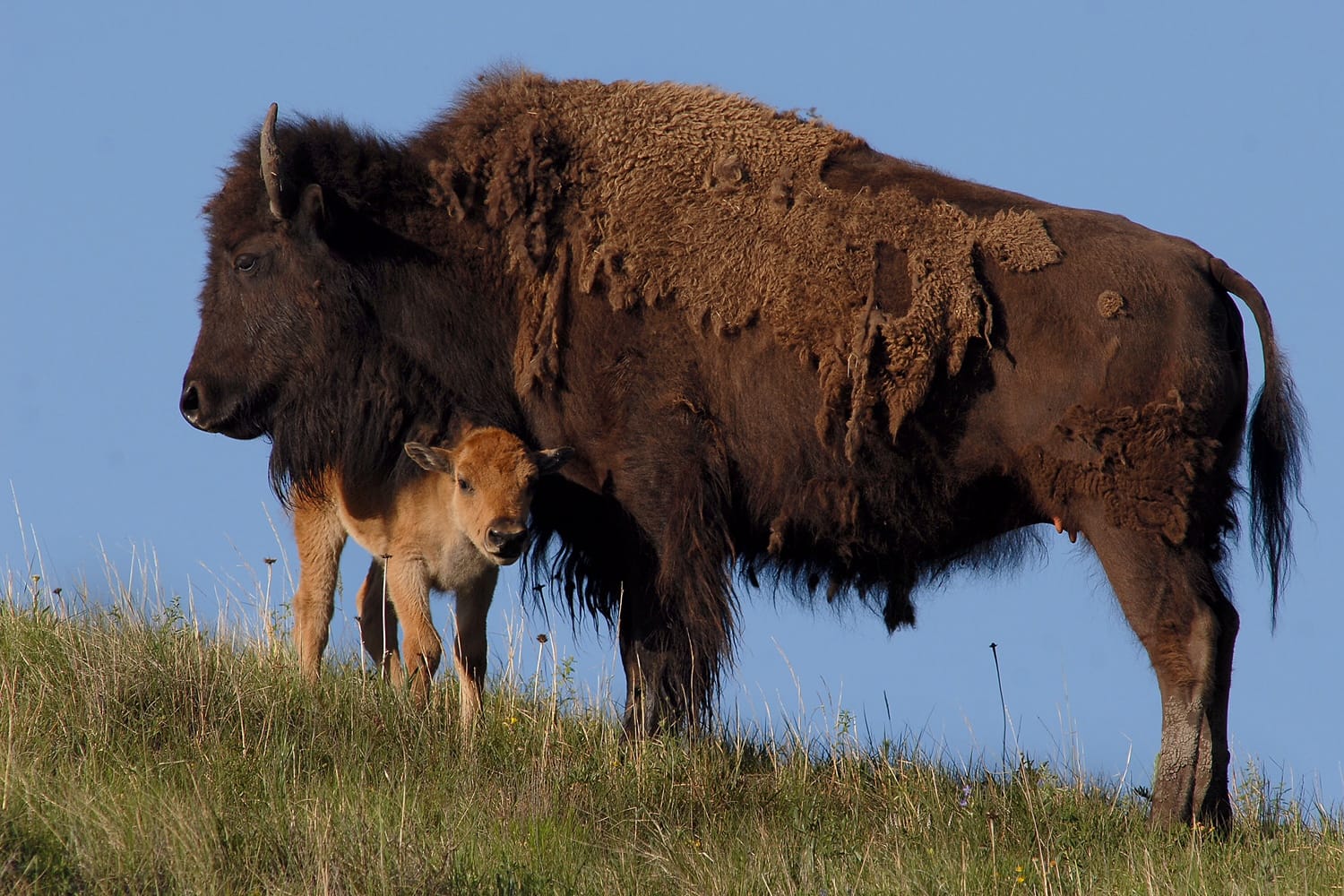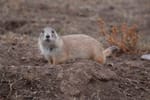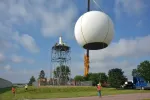When a Custer County Sheriff’s deputy knocked on his door at 8 p.m. on Tuesday Dec. 12, Dick Kettlewell suddenly faced a dreaded decision: What should I save when fleeing a fire?
Kettlewell, whose rental home was in the path of the raging Legion Lake Fire that had already devastated much of nearby Custer State Park, grabbed only three things. He corralled his cat into a pet carrier, packed a bag with some clothes and took the external hard drive from his computer before bugging out in his small pickup.

Kettlewell, 72, saved the cat out of love, brought the clothes out of necessity, and protected the computer files for posterity.
That computer drive holds the fruits of thousands of hours of his labor of love as a nature photographer and contains some of the most well-known published images of Custer State Park and its diverse wildlife.
The December fire left his once bountiful pictorial playground blackened and bare.
With skills honed as a newspaper photographer, Kettlewell has for the past 25 years combined his appreciation for wildlife with his deft touch with a camera and a deep level of patience to capture iconic images of the Black Hills of South Dakota. He has focused particularly on Custer State Park. Kettlewell has published five picture books, and is frequently called upon to serve as an Artist in Residence at the State Game Lodge and Legion Lake Lodge in the park.
Kettlewell first visited Custer State Park with some college buddies in September of 1964 when he was a freshman at Chadron State College. Though it would be a few decades before he would return to call South Dakota his home, Kettlewell and his camera have been fixtures in the park ever since.
The day before the sheriff’s deputy came knocking, Kettlewell was well aware that a huge fire was raging in his beloved park. From his home that lies only 200 yards from a remote back entrance into the park, he had followed the news on the internet and had seen the massive smoke columns rising above the region.
Still, the arrival of the deputy was “a bit of a surprise,” Kettlewell said with a grin of obvious understatement. “The deputy said, ‘It’s coming this way fast,’ and he strongly urged me to get out of there.”
Coming home after fire
When Kettlewell — who lives alone now that his wife is in a nursing home — returned a couple of days later, he found the small home still standing but with an expanse of torched turf and trees all around it. Two outbuildings and a barn had been destroyed, taking with them some handmade easels and tables Kettlewell often used to display his work during the resident artist sessions.
The fire also consumed a wooden blind Kettlewell had made and stationed at a small spring-fed pond near his home, a place where he has captured some of his most memorable images.
“It’s just one of those things,” he said of his losses to the blaze.
Kettlewell is a congenial man who is quick to smile and isn’t shy about sharing his love for Custer State Park.
“It’s because of what’s here,” he said in mid-January. “The animals. There’s so many animals there, especially the prairie animals … it’s really a living lab.”
On a recent drive through the park, Kettlewell shared some of his secrets to making a great picture in the park.
First, it takes a keen and caring eye to know how and where animals live, from the famous buffalo and burros to the fast-flying sharp-tailed grouse and playful prairie dogs.
To prove his point, Kettlewell went north on Wildlife Loop Road to a gravel path called Fisherman Flats Road. Winding around a couple curves and over a ridge, Kettlewell pointed to a hillside, now charred and blackened from the blaze, that he said often holds a herd of pronghorn antelope. Sure enough, a few hundred yards up the giant ridgeline stood a small group of antelope at play.
Once he chooses a site, Kettlewell quietly creeps his way to a spot where the light is right. Then, with either a 400- or 600-millimeter lens held sturdy by a monopod, the waiting begins. He frequently haunts watering holes or streams and watches for animals to go about their daily lives, keeping a sharp eye for interaction among them.
“I’ve waited for two, sometimes two and a half hours for a pronghorn doe to go and get a fawn up,” he said.
On a drive down another gravel roadway known as Oak Draw Road, Kettlewell motioned to a small ridge and a meadow below. That’s the spot, he said, where he and a fellow photographer once stood sentinel for more than an hour, hoping a pronghorn mother would roust her fawn from the native grasses. Eventually, his friend could no longer take the wait and drove off.
As he watched his pal’s car bump away down the road, Kettlewell laughed to himself and snapped the shutter as the doe finally crept over to her fawn and created a priceless photographic moment.
A photographer’s favorite subject
Antelope are a particular passion for Kettlewell. Through book learning and field exploration, he has become an expert on their movements and life cycle. Though the 232-page book “The Spring Creek Chronicles” is Kettlewell’s pictorial masterwork, he has great appreciation for a smaller book, “A Pronghorn Year,” that documents the life of a pronghorn from birth to adulthood.
“I love the beauty, the sleekness, the fleetness of them,” he said. “They’re only found on the North American prairie, and there’s not another creature like them.”
Once Kettlewell begins speaking of antelopes, it’s hard to get him to stop.
He can’t resist telling the story of his favorite pronghorn he named “Lame Johnny” after the creek that runs through the southeastern section of Custer State Park. That antelope, Kettlewell recalled, had huge horns that curled up from his head and joined together to make the image of a Valentine heart. He also had incredibly thick horns near the base of his rack.
“He was a gorgeous animal,” Kettlewell said. “I’ve got lots of pictures of him.”
After a hard winter, Kettlewell returned to the stomping ground of the antelope and was certain after finding a thick set of horns that a carcass he came across belonged to his cherished “Johnny.”
“I know it was him because it was his territory, and Johnny was the classic buck who was intolerant of rivals,” Kettlewell said. “It was just his last winter.”
With the winter of 2018 now entrenched upon Custer State Park, Kettlewell is both hopeful and a bit worried about how his artistic canvas will reshape itself after the fire.
“As you can see, it’s not much to look at right now,” Kettlewell said. “It’s going to be an adjustment for a while.”





